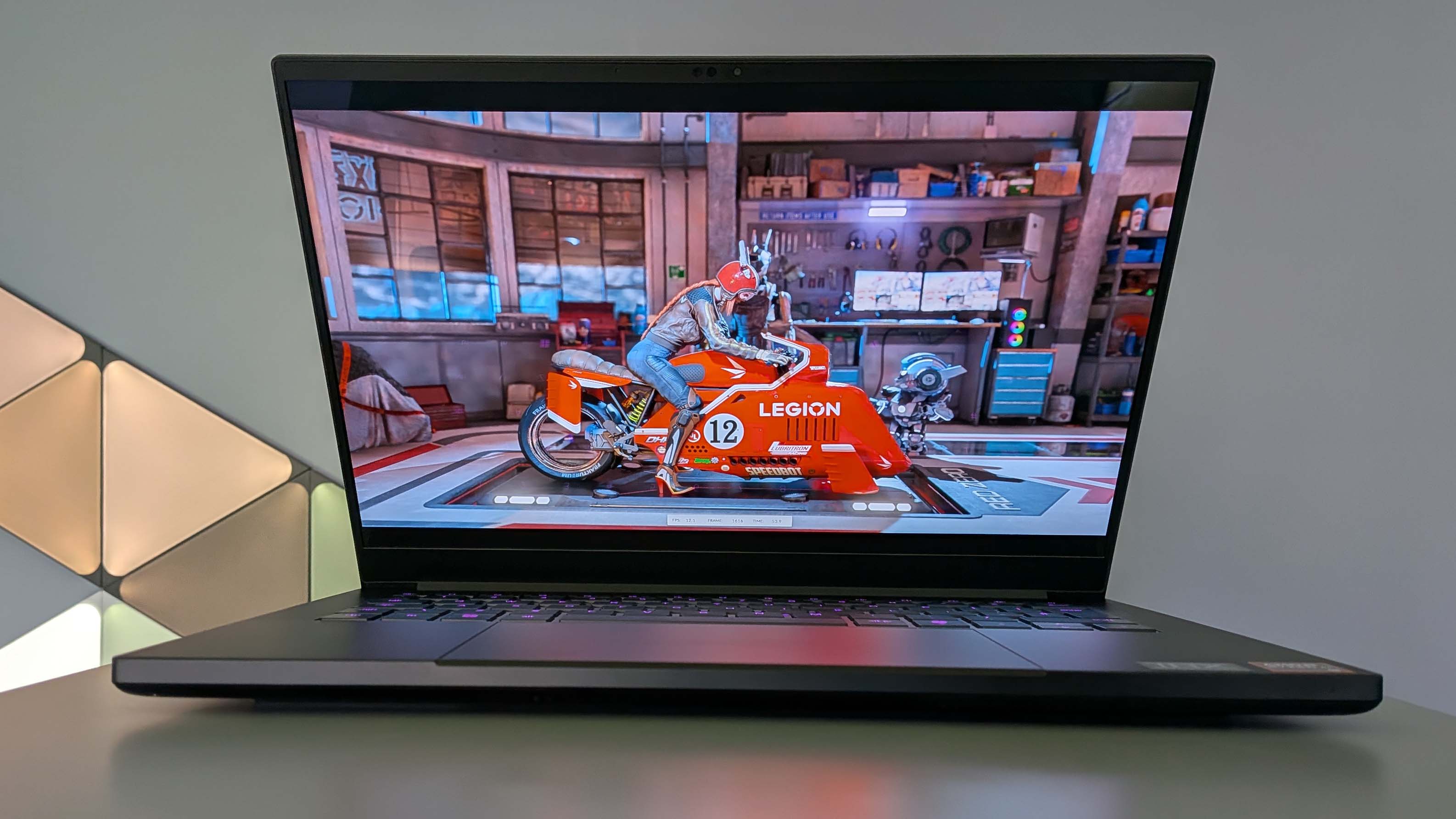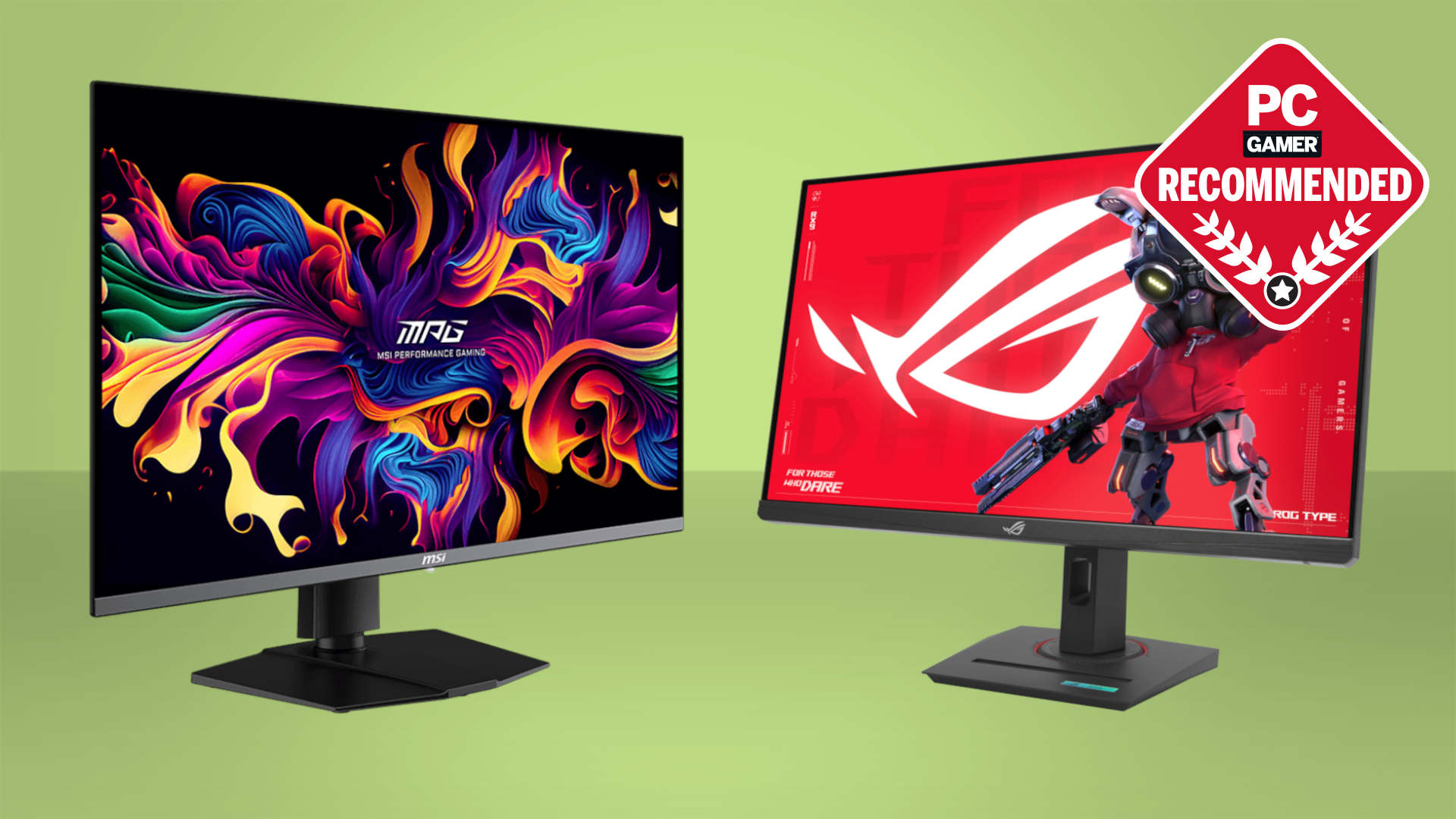Our Verdict
Razer's "aggressively priced" Blade still manages to be frustratingly pricey, especially in the face of cheaper, more powerful competition. But when it comes to actual use, it's a huge improvement over last year's model and there's now no other gaming laptop I'd want to have my digits on or spend my money on.
For
- That new chassis is fire
- Doesn't sound like a jet
- Lovely OLED display
- Good battery life
Against
- Lower spec Blade costs more than higher spec alternatives
- 880M iGPU is a miss
- No upgraded Blade keyboard
PC Gamer's got your back
I've said it before and I'll say it again, life moves pretty… no, wait, that was someone else… ah yeah, that was it: 14-inch laptops are my jam. They are the best form factor for the best gaming laptops, being an actually portable scale for a normal human, yet still able to deliver a large enough screen so you're not perpetually squinting at your games.
But Razer's Blade 14 has not been the best 14-inch gaming laptop in recent years. That accolade has belonged to Asus' beautifully crafted ROG Zephyrus G14. Last year's new design slapped the silicon out of Razer' mouth, creating a diminutive laptop with a whole lot of gaming clout in a gorgeous unibody, all-aluminium chassis.
This year is all about the fight back, however, with Razer finding itself on the back foot compared to Asus in the more standard 16-inch form factor, too. So, the new Blade 16 was sent to fat camp, lost a ton of weight, and has now been released to broad acclaim. Here we have its smaller sibling; a device that's had the same weight watchers treatment, and doesn't she look fabulous?
Now, I'm aware I have no place fat-shaming a laptop given my own personal corpulence, but the last few generations of Blade machines have been chonky beasts, and not in any kind of reassuringly weighty, or even jolly green giant sense. They've just not recently felt like particularly pleasing devices to use, let alone lug about in a courier bag.
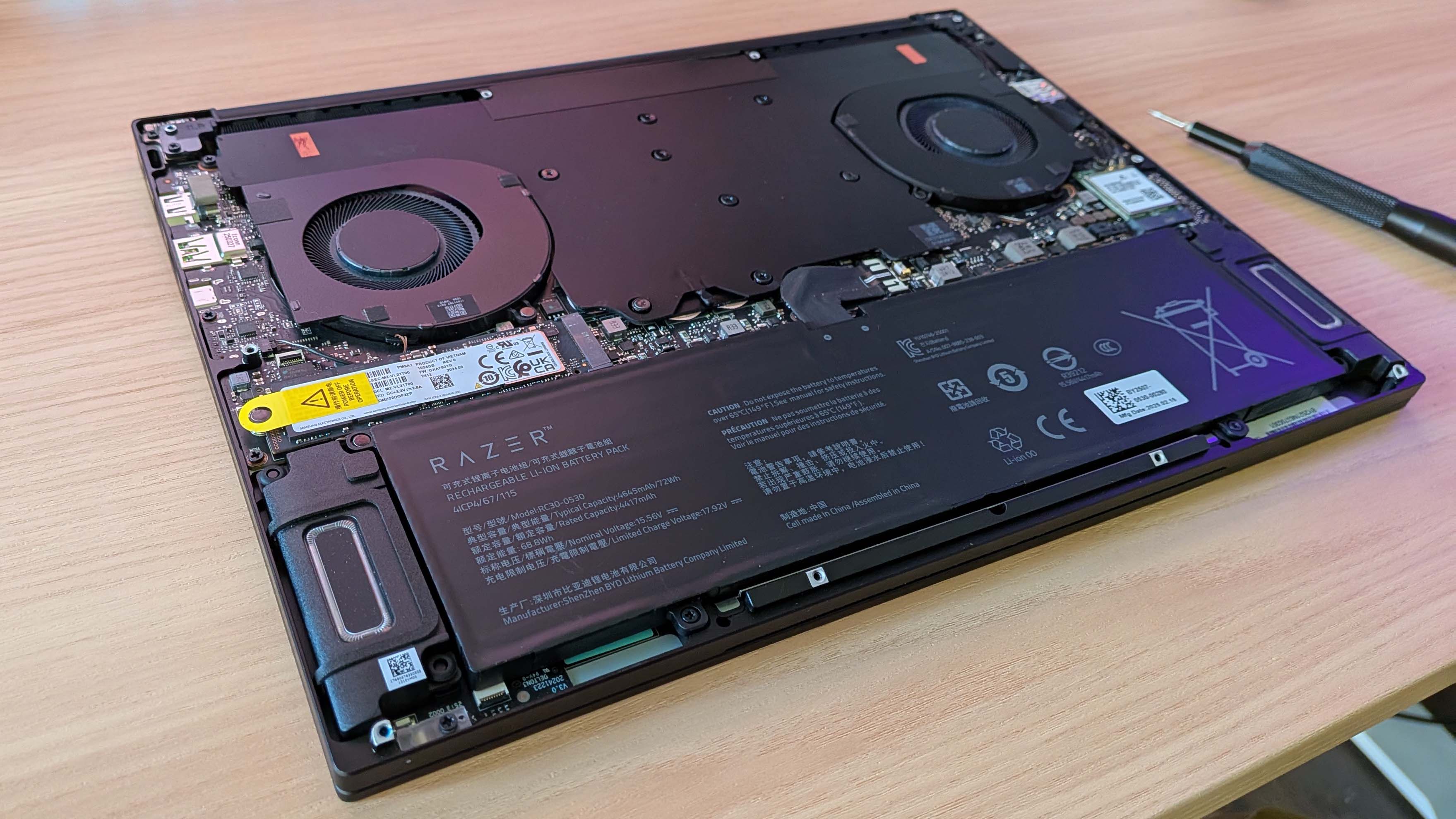
Model no: RZ09-05306WS3
CPU: AMD Ryzen AI 9 365
GPU: Nvidia RTX 5070 (115 W)
RAM: 32 GB LPDDR5X-8000
Storage: 1 TB PCIe 4.0 SSD
Screen size: 14-inch OLED
Refresh rate: 120 Hz
Resolution: 2880 x 1800
Battery: 72 Wh
Dimensions: 31.1 x 22.4 x 1.58 ~ 1.62 cm (12.23 x 8.83 x 0.62 ~ 0.64-inches)
Weight: 1.63 kg (3.59 lbs)
Price: $2,500 | £2,400
The new Blade 14 is very different. It's beautifully slim, getting back to that matte black MacBook aesthetic I've loved so well. In fact, it's almost identical to the size of the old Razer Blade Stealth 13, which was one of my favourite non-gaming laptops of the long, long ago, and that was a machine I carried around with me for years. But that slimline chassis has called time on upgradeable memory and put a hard limit on the level of GPU Razer is happy to supply in its smallest gaming laptop.
Though I'm loving the fact Razer has opted for an OLED in this machine, even over the 240 Hz LCD in the previous generation. It's now matching the 120 Hz 14-inch OLED Asus has been using for its G14 this generation and the last. It's a lovely display for both devices, and while the resolution is maybe a bit thirsty when it comes to powering games at 2880 x 1800 it looks stunning in general use.
The new chassis is the same size as this year's Asus Zephyrus G14, too, maybe even shading a little thinner at the front where it angles downwards ever so slightly. These comparisons to the G14 are inevitable given the fact that these two systems have been created to directly compete with one another. And, maybe surprisingly given my initial positivity, those comparisons aren't often immediately favourable towards the new Razer.
Keep up to date with the most important stories and the best deals, as picked by the PC Gamer team.
Sure, I love the new chassis, and it feels great in the hands, but it is essentially only matching the Zephyrus G14 in size and shape and screen, while on paper it absolutely loses out when it comes to the specs. And sometimes the pricing, too.
We are blessed in the UK that this Blade 14 costs less than the ROG Zephyrus G14 I've just reviewed alongside it, but in the US that situation is reversed when you look at the relative MSRP. It's a $100 or £300 delta either way and, were the specs identical you could almost hand-wave that away as some sort of premium favouring one or the other. But the specs most certainly are not.
The key issue is that the Blade 14 will only go up to an RTX 5070 as the discrete GPU component of the package. Compare that with the Asus G14 and that can pack in anything from an RTX 5070 to an RTX 5080 GPU. On the face of it that feels like a huge miss for the Blade, though having spent weeks testing both of these machines cheek-by-jowl I'm left with the impression that was maybe a smart move by Razer.
These are small laptops after all, and where we've struggled with Asus' fine machine, both in this generation and the last, is when it's been filled with hardware too spicy for its necessarily constrained cooling. It's not that the Zephyrus' chip chilling cannot cope, it's just that in order to keep things cooled the fans need to hit a pace that becomes aurally unpleasant. And there's a dual-tone in the latest systems' fan array which makes that ever more distracting.
That's meant, as I've been trying to rein in the G14 in order to make the gaming experience more enjoyable, the performance has had to take such a pruning that the 110 W RTX 5070 Ti version I've been using ends up performing around the same level as the 115 W RTX 5070 Blade 14.
Benchmark for success
For our benchmarking purposes we set every gaming laptop up for success, allowing them to perform at their highest potential. In general gaming terms, when both are being pushed to their limits, the RTX 5070 Ti of the G14 does hold a definite advantage. Generally, you're looking at between 10% and 20% as the performance delta between the two laptops.
Trying to run at the OLED screen's native resolution, things can become more tricky for the 8 GB graphics chip.
At 1080p maybe it's not so pronounced—being only around 10% or less quicker—but as soon as you start to throw some more pixels at it, especially trying to run at the OLED screen's native 2880 x 1800 resolution, things can become more tricky for the 8 GB graphics chip in the Blade 14. Though it's certainly not across the board. Most obviously Cyberpunk 2077's heavily ray-traced visuals are a struggle, while Black Myth Wukong runs pretty similarly on both systems.
In real terms, however, neither setup is able to produce performance that you'd be particularly happy gaming at when you're running at either system's native resolution.
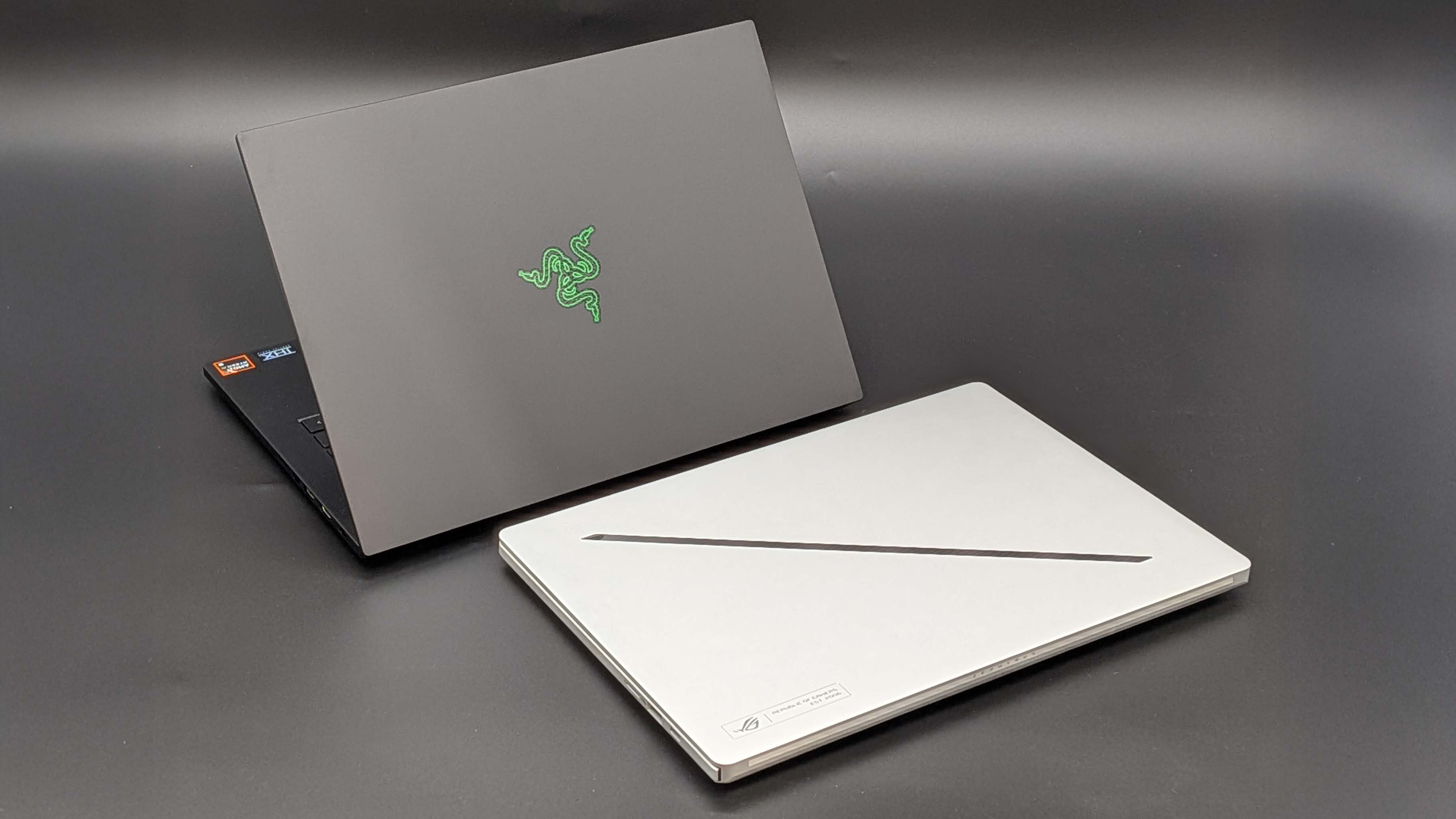
What really helps with the RTX 5070 in the Razer machine—and honestly for the Asus' RTX 5070 Ti, too—is what Nvidia's been chatting about for an age: its upscaling and Frame Generation chops. Running the G14 and the Blade 14 at native res. with DLSS and Frame Gen enabled where it's available, the lower spec GPU becomes far more capable at the pseudo native resolution.
We do, of course, have Multi Frame Generation, too. Both of these machines sport the Nvidia RTX Blackwell architecture, and MFG is a key feature for these GPUs. This is where the gap widens again, though, with the superior graphics chip delivering a better, lower latency experience with the full MFG beans at 4x.
That said, we're talking about hitting 91 fps with 4x MFG on the Blade 14 in Cyberpunk 2077 at RT Ultra settings, with DLSS set to Quality at the native 1880 x 1800 resolution. That really isn't bad for a wee machine, though the 1% Low fps figure is a little low. Punch up the DLSS setting to Balanced or even Performance and that will change, however.
The other specification discrepancy is more concerning for the Blade as a mini mobile device, however. That's because there is a single CPU SKU for the Blade 14 and that is the AMD Ryzen AI 9 365 chip. On the actual processing side, where it's missing two cores compared with the Ryzen AI 9 HX 370 in the G14, that's no biggie. That's because you're only missing a pair of Zen 5c cores rather than the full-fat Zen 5 cores, so you're still getting the same four high-speed cores for focused gaming performance and twenty threads for anything that needs it some multithreading grunt.
Though there is a definite difference between the G14 and Blade when it comes to productivity apps, where the extra multithreading capabilities represented by those extra Zen 5c cores on the former do come into play in a raw numbers sense, but outside of some serious Blender work I'd suggest you'd rarely notice it.
Where it does become a bit of a problem is on the integrated GPU side. The Radeon 880M of the Blade's chip is missing four compute units compared with the Radeon 890M of the HX 370 APU. Now, that does give you the same sort of potential gaming performance away from the discrete GPU as many of the last generation of gaming handhelds, but the increased performance of the Strix Point iGPU is a miss in a laptop with such a high sticker price.
On these sorts of devices, being able to completely park the Nvidia GPU from a power point of view, and rely on the integrated graphics for less energy-sapping games will give you far more gaming time on the go. And while it's not a major selling point of such a machine, you'd always want to have the higher spec iGPU if you're shelling out $2,500+.
Price premiums
And there it is, we're back to pricing, and it's a perennial problem with Razer machines. The big issue with the Blade 14, despite what Razer has been saying about aggressive pricing, is that right now the Blade 14 with the RTX 5070 and is $100 more than the G14 with the RTX 5070 Ti in the US, and only then because there is a discount on the Razer store at the moment. Even if we forget that the MSRP of the Blade 14 is another $200 higher, the fact that Asus is offering a significantly higher specced machine than Razer is, for even just $100, is going to make it hard not to side with the Zephyrus G14.
Shift down the ladder and that gets worse. The Blade 14 with the RTX 5060 is more expensive than the G14 with an RTX 5070, and you have to make do with just 16 GB of LPDDR5x while the Asus comes with 32 GB. And, remember, this is soldered memory so there's no upgrading down the line. At that point I cannot justify the Razer machine at all—its too much money for too little in comparison.
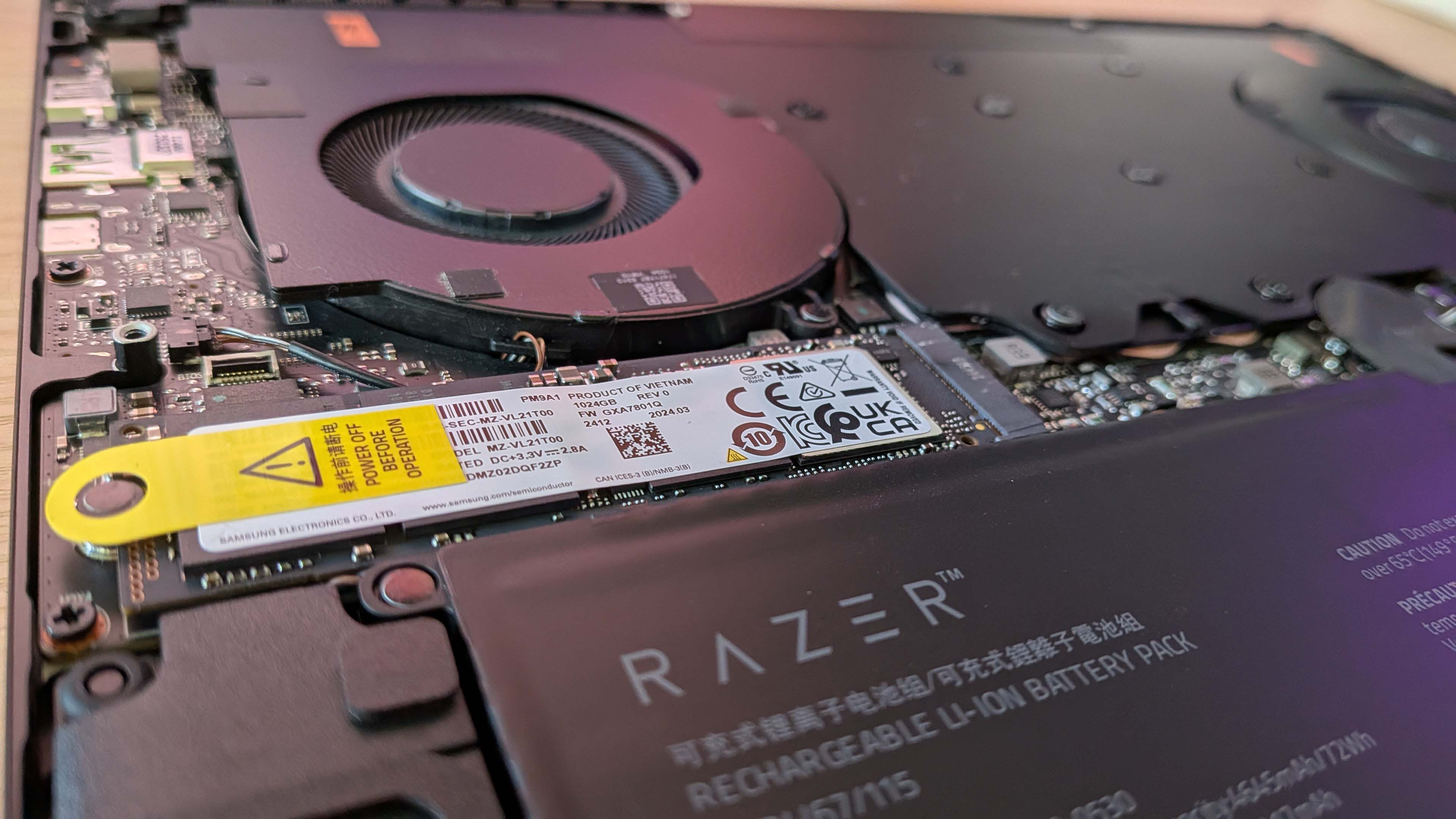

I know 100% which of these machines I'm going to miss when they go back to their respective homes.
Which makes the RTX 5070 version of the G14 maybe more compelling for people on a budget than the RTX 5070 Blade 14. With the same 32 GB of RAM, the same 1 TB SSD, and the same screen you're looking at a device which is $400 cheaper at $2,100. You will get notably weaker performance, as Asus is running its Nvidia GPU at just 90 W TGP and pairing it with a last-gen mobile CPU, too. The Ryzen 9 270 is effectively just a rebadged 7840U chip.
But this is where I'm maybe going to start to lose you, however, amid talk of experiences and preferences and the fact I know 100% which of these machines I'm going to miss when they go back to their respective homes. The 115 W RTX 5070 here feels like a sweet spot, and the Razer Blade 14 is absolutely the gaming laptop that I would want out of this generation. Having spent a lot of time with both machines—as well as a host of other newgen gaming laptops—the actual experience of using the ickle Blade is as close to my ideal for a mobile device as anything else I've used.
My big issue with the competing G14 is that new fan array (and the horrible keyboard font), making it an unpleasantly noisy, distracting and obtrusive device when it's trying to run its higher spec GPU. And sometimes, even when it's not. As I noted, in order to get the Asus laptop to run at an acoustic level I was happy with—one which matched the Blade's own Performance mode—I was suddenly losing the performance delta the RTX 5070 Ti should provide over the RTX 5070.
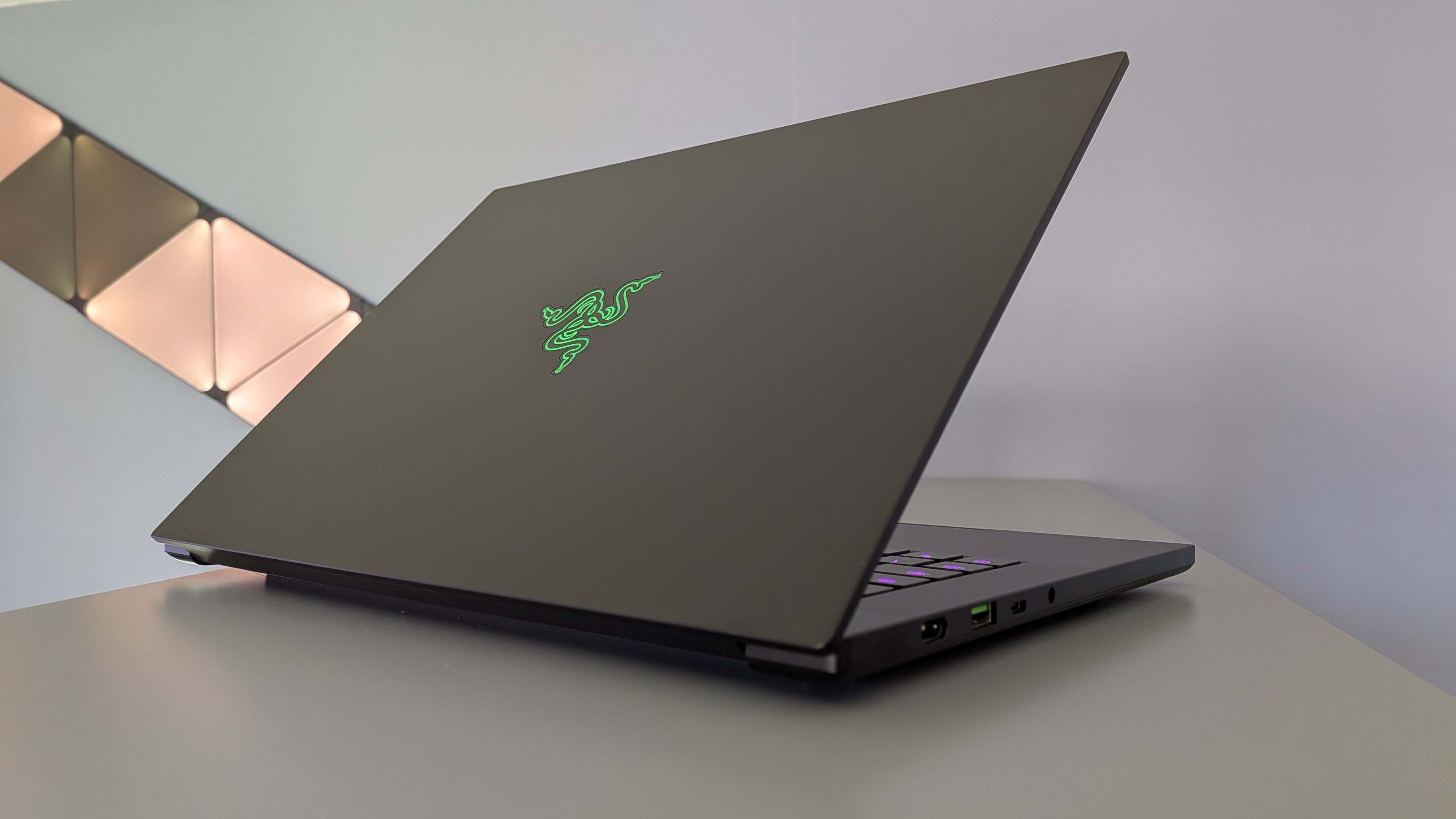

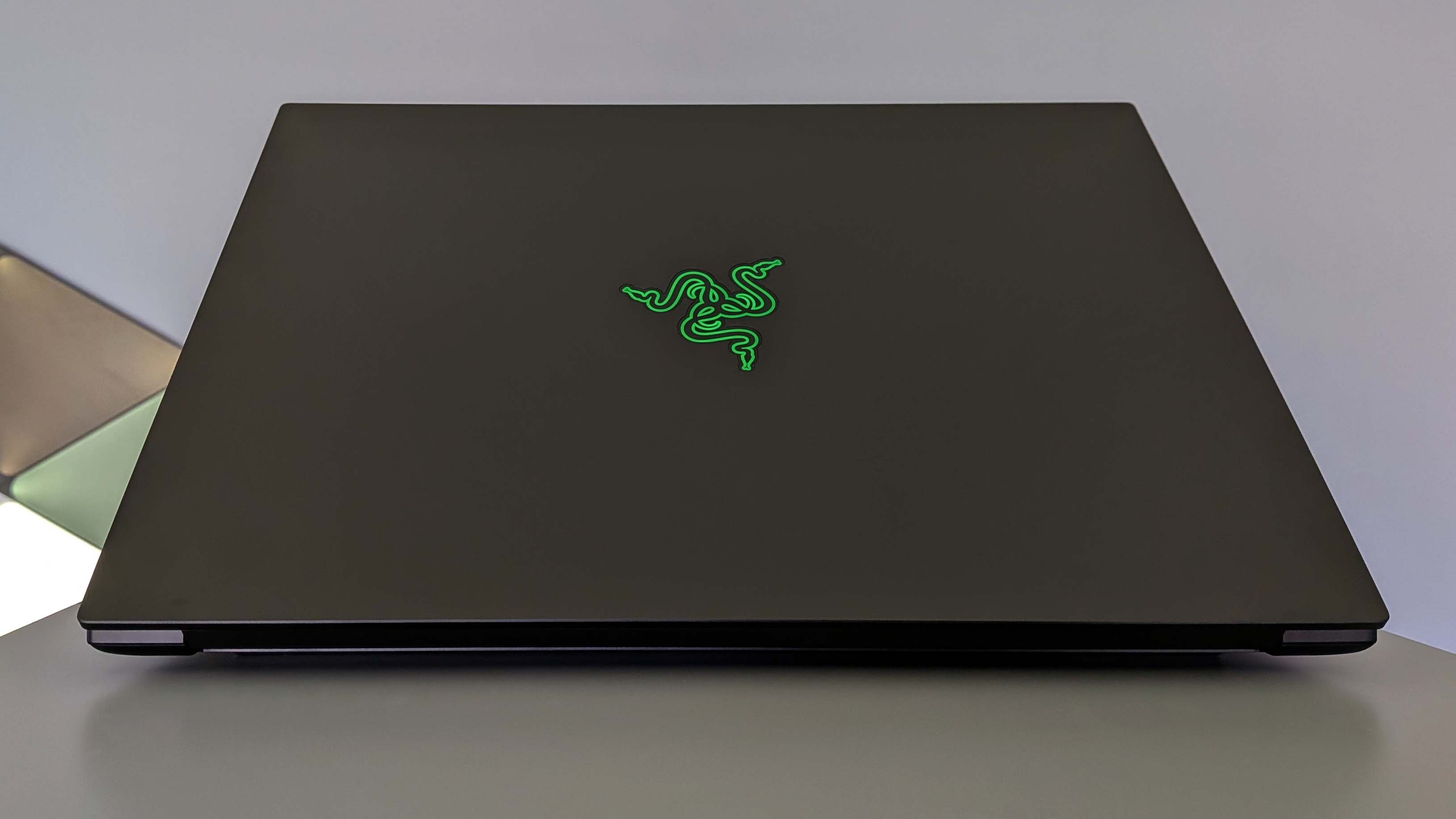
The raw benchmarks say one thing, but I'd never want to use the Zephyrus G14 at its fullest performance and that feels like a waste. While the sound of the Blade 14 at full chat I found far more acceptable. It has the definite, inescapable sound of air shifting at a certain rate, but tonally it's far more consistent and far less insistent. Even with a headset on I could hear the grating sound of the G14, while the Blade 14 almost fades into the background.
It's certainly not silent, and doesn't have the configurability of the Zephyrus G14 or the impressive Legion 7i Pro, but it will still allow you to set up a custom profile that will apportion power appropriately to CPU or GPU depending on your preference. You can even adjust down the CPU voltage—essentially undervolting in miniature—to a stable level to maximise your power draw. I was able to pull it all the way down to the maximum adjustment of -30 mV without encountering an issue.
Frustratingly, you don't have any of those options when you're running on battery. Synapse, Razer's much-maligned control software, only allows the Balanced preset when you're not powered from the wall, not even giving you the fully stripped back Silent preset to help preserve precious battery life.
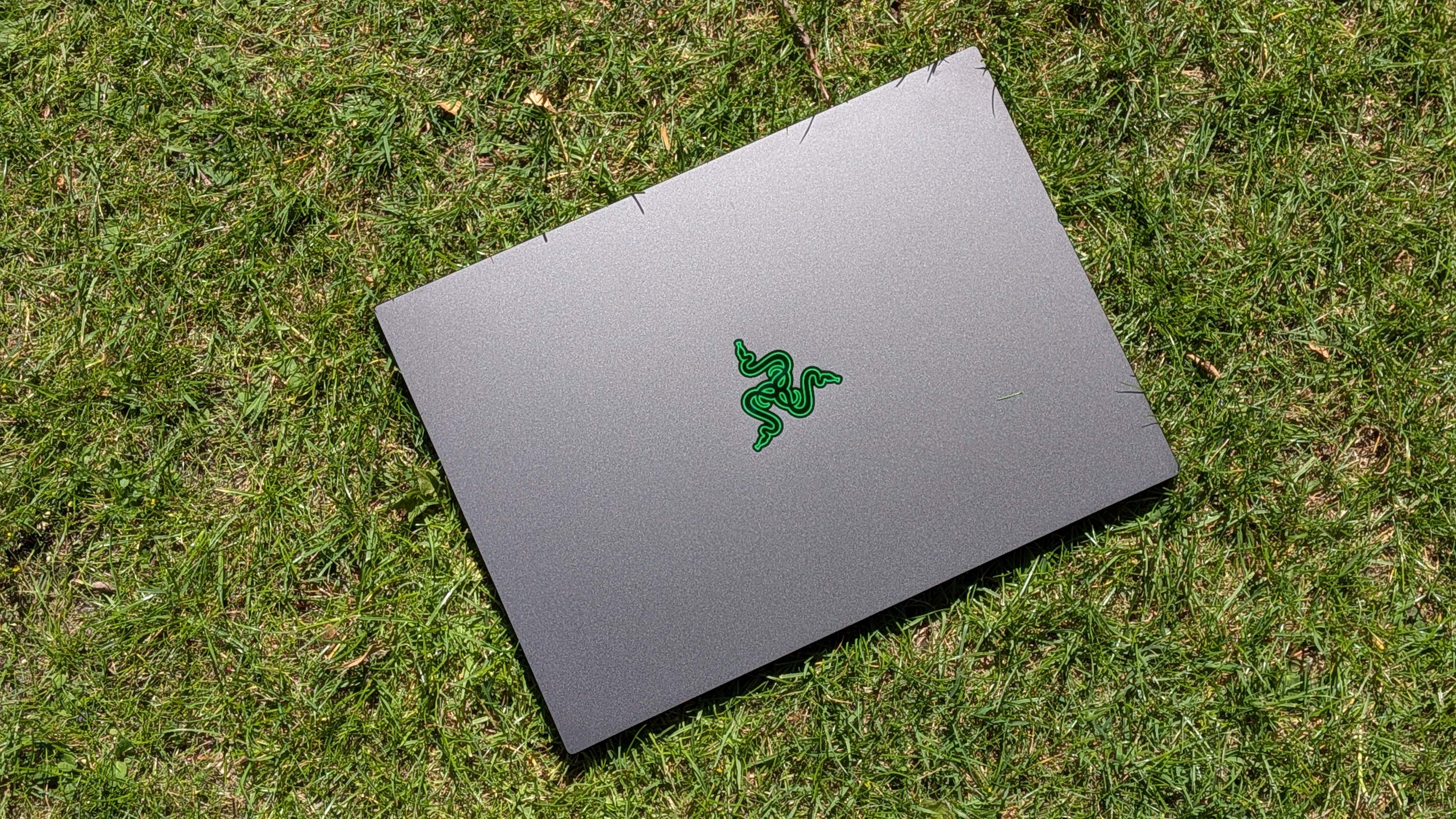
While we're talking frustrations, another milder one is that Razer hasn't included the improved keyboard from the Blade 16 with this machine. The keyboard is fine as chiclet keebs go, but the 16-inch laptop (and the G14, too) have far more travel in their keys, making for a more pleasant typing experience. I also found I missed hitting the super-smol apostrophe key more than once, too. I get this is all to keep size down as much as possible, but I am definitely missing the Blade 16's improved keyboard.
✅ You want a genuinely portable gaming laptop: The Blade 14 is a supremely mobile machine, with a beautiful aesthetic and excellent cooling and battery performance.
✅ You care more for the experience than the raw numbers: The Asus G14 will deliver higher frame rate figures, but for that you have to deal with its horrendous turbine whine, while the Blade 14 goes about its business comparatively quietly.
❌ Every penny must count: A more performant 14-inch laptop will cost you less, but it's not a better laptop, yet the Blade is such a premium that any necessary concessions to cost should have you switching allegiance to the Asus G14.
For some—with really good noise cancelling headphones—I can see that you'd be scoffing at any suggestion that a lower spec laptop for a similar price is in any way worth a recommendation. And I get what I sound like when I say that it's the overall experience you're paying for (yes, I sound like Jen-Hsun justifying lacking extra silicon in new GPUs) but all I can tell you is that were I to spend my money on the Asus because it has the better on-paper spec I'd still always be thinking of the Blade.
Maybe that's because what I want out of a gaming laptop is different. I want a system that is truly mobile, one that I can take around with me without busting my back, and that has a decent amount of power without needing to shout. I don't need it to be a desktop replacement in either size or performance—for that I'm still absolutely recommending the excellent Legion 7i Pro or the Blade 16 if you have cash to burn—and the Blade 14 ticks all my boxes.
So here it is, this season's best 14-inch gaming laptop. As it ever was with Razer, however, if you want the best machine you have to pay for the privilege, I'm just disappointed that premium is on top of a weaker overall component spec, too.

1. Best overall:
Razer Blade 16 (2025)
2. Best budget:
Lenovo LOQ 15 Gen 10
3. Best 14-inch:
Razer Blade 14 (2025)
4. Best mid-range:
MSI Vector 16 HX AI
5. Best high-performance:
Lenovo Legion Pro 7i Gen 10
6. Best 17-inch:
Gigabyte Aorus 17X
Razer's "aggressively priced" Blade still manages to be frustratingly pricey, especially in the face of cheaper, more powerful competition. But when it comes to actual use, it's a huge improvement over last year's model and there's now no other gaming laptop I'd want to have my digits on or spend my money on.

Dave has been gaming since the days of Zaxxon and Lady Bug on the Colecovision, and code books for the Commodore Vic 20 (Death Race 2000!). He built his first gaming PC at the tender age of 16, and finally finished bug-fixing the Cyrix-based system around a year later. When he dropped it out of the window. He first started writing for Official PlayStation Magazine and Xbox World many decades ago, then moved onto PC Format full-time, then PC Gamer, TechRadar, and T3 among others. Now he's back, writing about the nightmarish graphics card market, CPUs with more cores than sense, gaming laptops hotter than the sun, and SSDs more capacious than a Cybertruck.
You must confirm your public display name before commenting
Please logout and then login again, you will then be prompted to enter your display name.
